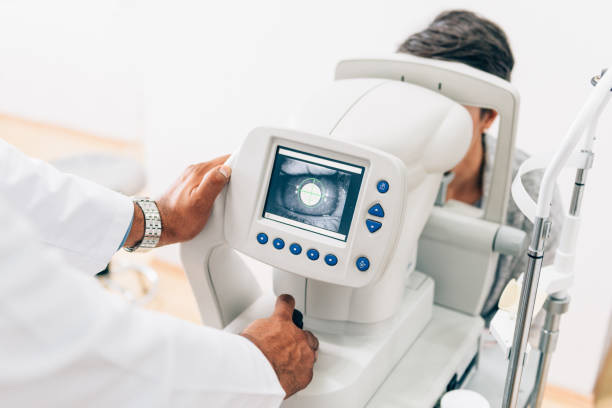TONOMETER
·
One
of the oldest, this device is used to measure the pressure of the fluids inside
the eyeball.
·
which
is called intraocular pressure (IOP).
·
If
the eye pressure increases beyond a point, then it may permanently damage the
optic nerve.
·
This
high-pressure disorder is called glaucoma.
·
Have
to use tonometer they are 3 methods
1st method/ Goldmann Applanation Tonometer
·
The
most accurate method measures the force needed to flatten an area of the
cornea. /standard method for measuring intraocular pressure.
·
The
higher the intraocular pressure, the greater the force needed to compress the
cornea
·
A
tonometer measures the pressure of the eye by very gently touching the cornea.
·
The
surface of the eye is numbed with eye drops to be instilled into the eyes.
·
A
fine strip of paper stained with orange dye is held to the side of the eye.
·
The
dye stains the front of the eye to help with the exam.
·
Sometimes
the dye is in the numbing drops.
·
You
will rest your chin and forehead on the support of a slit lamp so
that your head is steady.
·
You
will be asked to keep your eyes open and to look straight ahead. The lamp is
moved forward until the tip of the tonometer just touches the cornea.
·
Blue
light is used so that the orange dye will glow green.
·
The
health care provider looks through the eyepiece on the slit-lamp and adjusts a
dial on the machine to give the pressure reading.
·
There
is no discomfort with the test.
2nd method/Tono-Pen Indentation/Applanation
Tonometer
·
A
second method uses a handheld device shaped like a pen.
·
You
are given numbing eye drops to prevent any discomfort.
·
The
device touches the surface of the cornea and instantly records eye pressure.
·
It
can prove useful in portable screenings, emergency rooms, or operating rooms to
measure intraocular pressure.
3rd method/Non-contact Tonometer
·
Many
doctors also use an air -puff tonometer that blows air onto the eyes to measure
eye pressure or test for glaucoma.
·
The
last method is the noncontact method (air puff).
·
In
this method, your chin rests on a device similar to a slit lamp.
·
You
stare straight into the examining device.
·
When
you are at the correct distance from the device, a tiny beam of light reflects
off of your cornea onto a detector.
·
When
the test is performed, a puff of air will slightly flatten the cornea; how much
it flattens depends on the eye pressure.
·
This
causes the tiny beam of light to move to a different spot on the detector.
·
The
instrument calculates eye pressure by looking at how far the beam of light
moved.
·
Advantages
of this method include no requirement for topical anesthesia and its usefulness
in screening, especially in children and adults who are unable to tolerate
contact methods.
·
However,
it is considered a less accurate method
